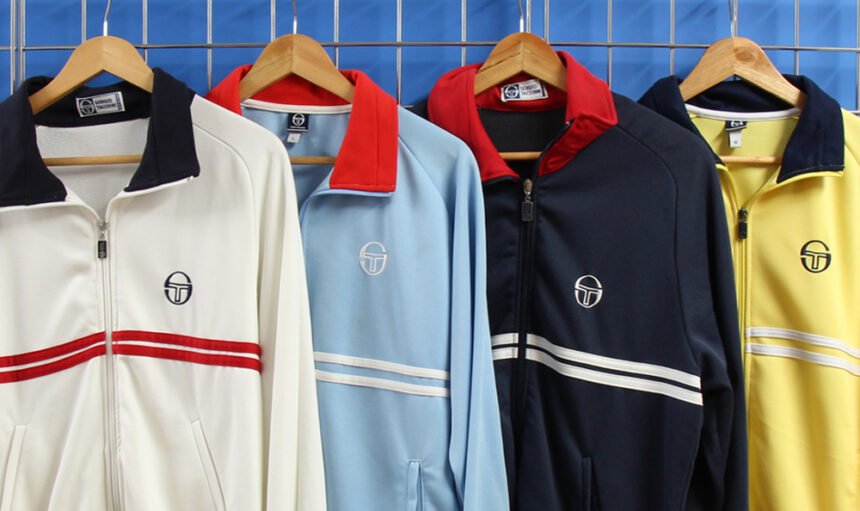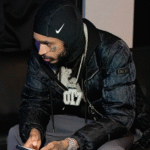The term “80s Casual Classics“ refers to a specific subculture of fashion that emerged in the United Kingdom during the early 1980s, particularly among football fans. It wasn’t just a trend—it became a way of life. Defined by sleek sportswear, European labels, and a focus on looking sharp without appearing flashy, this movement reshaped the way youth expressed identity through clothing. It combined street smarts, a bit of rebellion, and plenty of brand loyalty.
The Birth of Terrace Fashion
In the early 80s, British football terraces became an unexpected runway. Unlike the punk or goth scenes, casual culture wasn’t about being anti-establishment; it was about blending in while standing out. Young football fans began wearing expensive European sportswear, sourced during away games or European matches. This marked the beginning of the terrace fashion revolution.
Brands like Fila, Sergio Tacchini, Lacoste, Ellesse, and Diadora became iconic among the working-class youth. These clothes were seen as status symbols—rare, bold, and often imported.
European Influence: Why Foreign Brands Ruled
While British fashion had its heroes, the continental influence was massive. Football away days in Europe exposed fans to new styles and brands not readily available back home. Importing these pieces or grabbing them during European trips became a badge of honor. The rarer the item, the more respect it commanded.
This continental edge added a mystique to the casual look—it was part global fashion knowledge, part street credibility.
The Connection to Football Culture
The rise of 80s Casual Classics is inseparable from football fan culture. Young fans, especially those traveling to away games, wanted to out-dress rival supporters without attracting police attention. So, they ditched skinhead boots and team scarves for sleek trainers and high-end sportswear. It was clothing as camouflage, style as a statement.
Groups like Liverpool’s “Scallies”, Manchester United’s “Perry Boys”, and other firm followers across England helped spread and evolve the look.
Casuals vs. Other 80s Subcultures
While punks were defined by DIY aesthetics and anarchist ideals, and mods were about sharp suits and scooters, the casuals were covert and brand-obsessed. They rejected loud political messaging in favor of status through style.
This made them a more subtle and enduring fashion movement—one that didn’t just burn bright for a few years but helped shape UK streetwear for decades to come.
Revival and Influence on Modern Streetwear
The resurgence of 80s Casual Classics in the 2000s and 2010s owes much to nostalgia and a growing appreciation for retro fashion. Brands like Adidas Originals, Reebok Classic, and Fila Vintage began reissuing their iconic styles. Meanwhile, the Casual Revival movement began celebrating the look with new collections, documentaries, and books.
It also found its way into modern British music culture—bands like Oasis and Kasabian often sported classic terrace fashion. And of course, the football casual aesthetic continues to be a key reference point in contemporary menswear.
Why 80s Casual Classics Still Matter Today
So, why do these looks endure? Because they represent a unique fusion of class, rebellion, subtlety, and street intelligence. They capture a time when clothes weren’t just fabric—they were identity, power, and pride.
The 80s Casual movement wasn’t created by designers—it was created by the streets, by young people shaping a culture of their own. That authenticity can’t be faked, and it’s why the style still resonates.
Iconic Brands That Defined the Era
- Fila – Italian heritage, worn by tennis stars and terrace kings.
- Sergio Tacchini – Another tennis-inspired legend with cult status.
- Lacoste – The polo shirt king, a mix of sport and elegance.
- Ellesse – Famed for its ski-inspired sportswear.
- Adidas – From tracksuits to trainers, a staple in every casual’s wardrobe.
- Diadora – Luxurious Italian trainers with timeless designs.
- Stone Island – Technical, mysterious, and the ultimate badge of cool.
Read More: Stunning Ideas for Money Piece Hair Dark Hair
FAQ
It refers to a distinctive fashion style that emerged among British football fans in the 1980s, characterized by designer sportswear, rare trainers, and European fashion influences.
Key brands included Fila, Adidas, Lacoste, Sergio Tacchini, Ellesse, Diadora, Stone Island, and CP Company.
Yes, terrace fashion is closely linked with the casuals—both terms are used to describe the fashion adopted by football supporters on stadium terraces during the 1980s.
The blend of exclusivity, smartness, and football heritage continues to inspire modern streetwear, with many brands re-releasing iconic looks.
Absolutely. The look has evolved but remains influential in retro-inspired fashion, streetwear culture, and even high fashion collaborations.
Final Thoughts:
80s Casual Classics wasn’t just a phase—it was a defining look for a generation that wanted to rewrite the rules of fashion. Without shouting, without slogans, they let the labels and their look do the talking.
Today, the legacy lives on not only in retro collections and reissued classics but in the lasting influence on street style across the globe. The 80s casual movement proves that style with roots, attitude, and authenticity never goes out of fashion.











